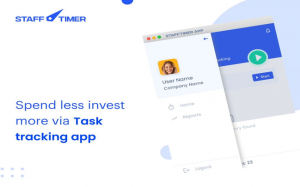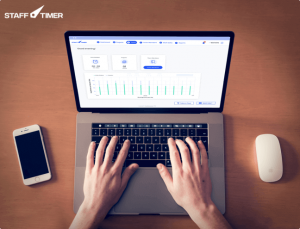10 Ways Time Tracking Helps You Make The Most Of Your Freelance Employees
Time Tracking for freelancers is quickly gaining popularity in the remote work industry. As more and more companies go virtual with respect to their teams and work practices.
Many companies are functioning with distributed teams that are spread out globally. The issue, most of them face, is regarding fully utilizing the freelancers they hire for different tasks.
Most are not able to do so and are generally overpaying in return for the output they’re receiving. Here are 10 ways in which you can make the most of your freelance employees and save the company’s resources using a time tracking solution.
10. Track Time for Increased Productivity
You can carry our time tracking using time tracking solutions. Many are available in the market and have multiple features and prices.
Integrate time tracking solution with your company’s platform and track your freelance employees’ productivity using that.
When working remotely, the freelancer can start the timer for a certain task they are about to work on, pause it when they take a break and end it when they are done with the task.
9. Remote Monitoring to Ensure Correct Work Track
Monitor your remote employees using a time tracking solution that supports real-time screen sharing and takes screenshots of the freelancers’ computer screen every minute.
Those screenshots can then be combined as separate frames and used to create a complete workday playback video. That way you can know exactly what your employees are working on and how their progress is going.
This will also make sure that you and your freelance team are on the same page when it comes to how tasks are attempted and what direction a project is supposed to take.
8. Implement a Schedule via Time Tracking Solution
Design a schedule for your employees and make sure that it is being followed. Considering they are freelancers and will have other tasks, the schedule must be a personalized one for each employee, fitting to their personal chores and tasks as well.
Furthermore, it must align with the work hours of the company so remote employees are available for coordination, discussions or meetings with in-house employees, whenever needed.
Productivity heat-maps for each individual must be an important consideration while creating the schedule.
7. Task-wise Billing Using A Time Tracking Software
The payment structure for freelancers is best when done task-wise or hour wise. For this, you can integrate an invoicing solution with your time tracking solution. So the billing can be done according to tasks completed and the hours worked.
The time tracking solution will have a complete record (with proofs) of the work completed by the employee. That way you can be sure that you’re not overpaying the freelancers.
6. Intelligent Report to Get Value for Money
Many leading time tracking solutions in the market offer the option of advanced reporting. Some remote employee monitoring software offers intelligent employee reports. Where the day’s screenshots are automatically categorized according to the active windows in those images, clearly telling the employer what the freelancers spent most of their time working on.
This increases transparency and if there are any wasted minutes, the employers can get to know about those within a matter of a few clicks.
5. Task Logging to Estimate Work Done Through Time Tracking
Make sure that your freelance employees log each and every task they perform. Whether it is a task already assigned to them or a task they performed.
When a task is logged, a record is maintained that lets the employers know how much work was actually achieved by the freelancer. Whether they are putting the best of their efforts into the work or not.
4. Clarify and Align Company’s Goals with Freelancers
In order to be sure that the employees work the same way that you expect them to, it is essential to make it clear to them what they are working for, what is the end result supposed to look like and what are you trying to achieve.
Once the goals of the company are aligned with the freelancers’ goals, then the workflows will be regulated on their own. Productivity will increase and the employees will put their best foot forth.
When the employees know how their work is going to impact the common end-goal. They will have a clear idea of the value of their work and their value as an employee to the company.
This is essential for boosting the morale of employees and pushing them to work harder.
3. Rule of Thumb: Work Smart, Not Hard
Taking up this rule will make tasks easier for you and your employees, both. Working smart saves time, energy, resources, gets things done much faster and makes searching for information much easier.
Automate timesheets instead of manually maintaining logs for each hour or each task. It is much easier to start and stop the timer with a single click, rather than manually making each entry to a timesheet.
Furthermore, it makes the job simple when all work done during the activity time is recorded and gets divided into separate categories, creating automated timesheets.
This way, your freelancers spend the majority of their time working on the actual tasks instead of logging entries manually.
2. Improve Communication via Audio Clips
Team communication impacts employee productivity and plays a major role in how your employees perform. Merely assigning them tasks using a project management tool or a time tracking software isn’t enough.
Nothing can beat the power and impact of face-to-face communication. If you cannot communicate with them in-person due to geographical boundaries, then feel free to conduct a Skype Business Call, or use a platform that helps.
You can assign tasks in the form of voice clips and allows the freelancers to respond back using voice clips as well. In case they have any query and wish to clear it prior to attempting a task.
Clear and quick communication is always verbal and enables workflow-streamlining when the teams are on one page.
1. Trust your Employee to Get the Job Done
If you’ve hired a freelancer, trust that they can get the job done as well. There is no point in hiring them otherwise.
If you try to micromanage your employees, directing their every move and telling them how to go about a task, even when they might be suggesting better ways to do it, they will simply be exhausted and irritated.
Build a certain trust level with your employees, and believe in them. Have a solution that monitors their work activity by giving you an idea of their sincerity and dedication to their work.
If they work hard, waste no time and have the required level of productivity, then let them be, sit back and let them deliver the assigned work to you, on schedule.






